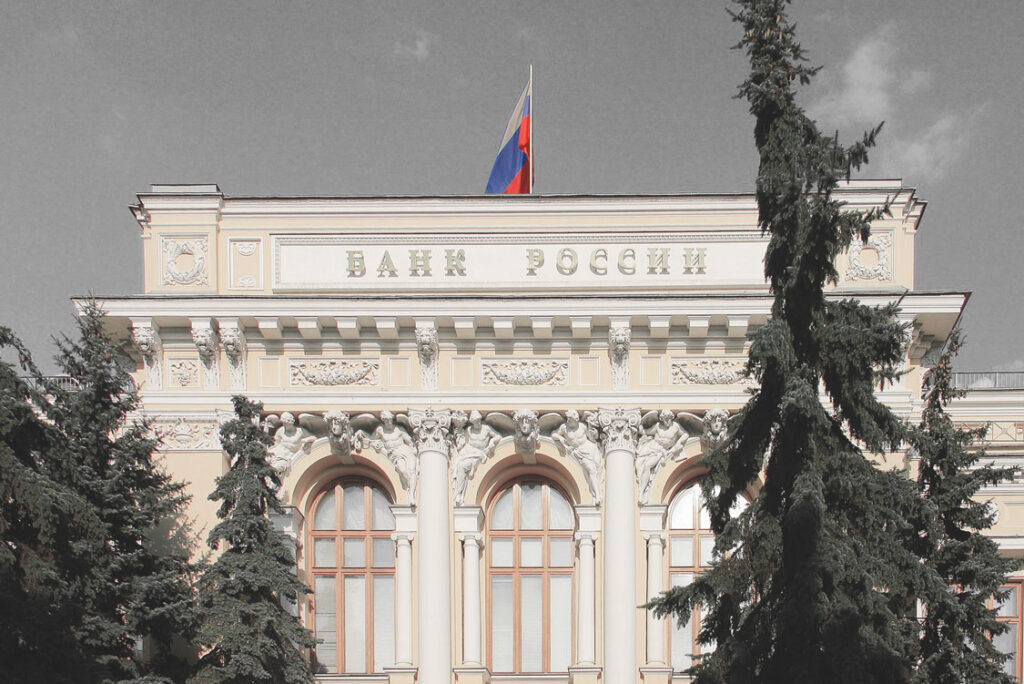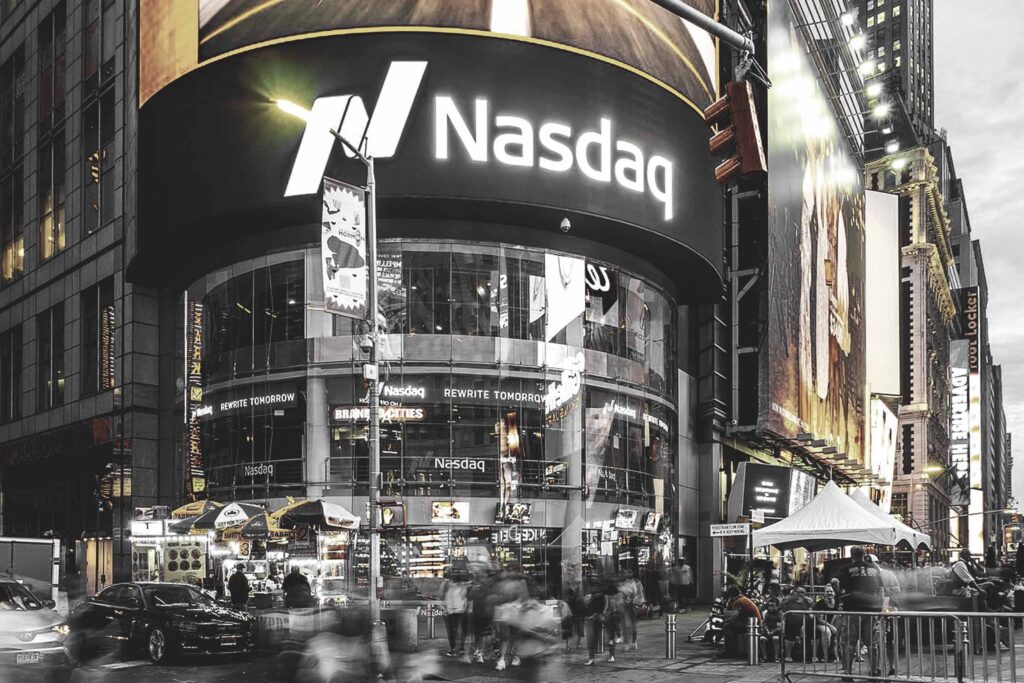
Authored by Thomas Stray, Endemaj Funds CEO
Thomas Stray is a seasoned investment banker leveraging decades of experience in capital markets, financings and deal structuring, negotiation, and fund raising to identify and capitalise on market opportunities with significant upside.
Welcome to Endemaj Funds’ Weekly Update, where we take you on a whirlwind tour of global markets, along with some of our very own analysis and insights on various topics.
This week, we’ll explore the roller coaster ride of geopolitics, the resurgence of private equity, the ebb and flow of European stocks, and the evolving landscape of cryptocurrencies. So, buckle up and join us as we delve into the fascinating world of finance, keeping things engaging, insightful, and always with an eye on the long game.
In the Spotlight: Sailing the Stormy Seas of Geopolitical Tensions
The current geopolitical climate has had a significant impact on global markets. A diversified and dynamic investment approach is necessary to navigate these turbulent times, from the Russia-Ukraine tensions to the resilience of equity.

Currently, Russia-Ukraine tensions have dominated headlines, with Russia officially recognizing two separatist states in Eastern Ukraine and ordering troops into the area. Europe, Australia, and the United States have announced sanctions on Russia, with the possibility of more serious sanctions if Russia continues its current trajectory.
As a result, this has caused uncertainty for both the economy and investment markets. Businesses and individuals are delaying their decision-making process, consequently influencing the growth of economies. From an investment market point of view, uncertainty can also result in risk aversion behavior and volatility.
History has shown that markets are volatile and hostile in the short-term following the initial trigger event but have a tendency to recover quickly. In fact, after one year of a geopolitical event, markets return positively 83% of the time, with an average of 12.3%.
It is important to note that bear markets do not usually follow geopolitical events involving military conflict. Declines are typically short-lived and far below a bear market’s 20% drawdown threshold. After forming a bottom, markets tend to resume their uptrend, as evidenced by past events such as the invasion of Grenada, the bombing of Libya, and the Iraq War.
At Endemaj Funds, we are committed to helping our clients navigate market volatility and hostility during these challenging times by adopting a diversified and dynamic investment approach, focusing on long-term growth and stability.
We utilize tools to dynamically shift allocations during adverse market events to smooth the effect of declines and invest in specific asset classes, such as gold, which tend to increase in value during geopolitical tensions, offsetting some of the declines in equity markets.
So while the current geopolitical tensions may influence economic activity and widespread investor confidence, it is important to maintain a long-term perspective and make careful decisions about their superannuation investments.
Snapshot 1: The Renaissance of Private Equity
The private equity landscape is transforming right before our very eyes. As the industry adapts to a changing environment, hands-on involvement, operational excellence, and enduring partnerships with portfolio companies will be critical for participants within the private equity space.

As the CEO of Endemaj Funds, I have witnessed the private equity (PE) industry’s roller-coaster ride over the past decade. It seemed that anyone could succeed as a private equity investor, as rising valuations and cheap financing propelled returns and attracted capital. Portfolio company efficiency improvements took a back seat while acquisitions soared, employing millions of Americans indirectly through the industry.
However, last year the tide turned. Valuations fell, leverage became scarce, and dealmaking collapsed. High-priced transactions from more exuberant times suddenly appeared misguided. But as we enter a new era for private equity, dealmakers are returning to the table, adapting to the changing landscape.
Economic uncertainty still hampers deal negotiations, but we’ve recently seen a surge in big deals. For instance, Silver Lake’s announcement to acquire Qualtrics, a software firm, for over $12bn with $1bn in debt commitments illustrates the industry’s resilience. Though the deal involved less leverage than in the past, it marked a significant buyout nonetheless.
The private equity industry that emerges from this period will differ greatly from its previous incarnation. It will be marked by humility as past missteps haunt the industry. Asset growth may slow, and the new era will favor investors who embrace hands-on involvement in their portfolio companies.
As we move forward, private equity investors must adapt to a more grounded and operational approach. Gone are the days when financial engineering alone could generate outsized returns. Instead, investors must be prepared to roll up their sleeves and actively drive improvements within their portfolio companies. This hands-on approach will require greater industry expertise and deeper partnerships with management teams.
We at Endemaj Funds understand how critical it is to adjust to these changing dynamics. We are dedicated to supporting our portfolio companies with operational excellence and strategic direction because we understand that our job as investors go far beyond mere financial support.
By cultivating strong relationships with our portfolio companies, we believe that we can create lasting value and contribute to a more sustainable, resilient private equity industry.
Snapshot 2: Surfing the Earnings Wave and Banking Upheavals
Now, let’s take a deep dive into the global stock market and the factors driving its performance. From mixed corporate earnings reports to the reverberations of banking turmoil, let’s find out how stocks are faring this week.

Stocks in Europe have been drifting while US equity futures gained amid mixed corporate earnings reports. The Stoxx 600 Index slipped 0.1% and is now set for its longest streak of daily declines since Dec. 8. Deutsche Bank AG shares dropped due to disappointing trading revenue, while Barclays Plc shares rose after posting a 9% gain in fixed-income trading revenue.
The US markets witnessed a bounce back in the S&P 500 futures from a two-day decline, while Nasdaq 100 futures extended Wednesday’s rally. Meta Platforms Inc. delivered strong earnings, beating analyst estimates and pushing its shares 11% higher in after-hours trading.
However, the ongoing turmoil in the banking sector may prompt the Federal Reserve to adjust the pace of its interest-rate increases, according to Evercore ISI’s head of central bank strategy, Krishna Guha. He cited issues at First Republic Bank, a US regional lender facing potential curbs on borrowing from the Fed.
In Asia, Samsung Electronics Co. shares recovered from an early drop after posting a record quarterly loss in its chip division but indicating a recovery later this year. Nomura Holdings Inc. shares fell after reporting a slump in profits. Shares in Japan and China traded higher, while those in Australia fell.
As the European stock market experiences a mixed performance brought about by lingering uncertainty in the banking sector and corporate earnings reports, it’s important to closely monitor these developments and make informed decisions based on two things primarily: (1) the overall market sentiment and (2) individual stock performance.
Snapshot 3: Unraveling the Greenback's Grip on Global Finance
Inspired by legendary investor Stan Druckenmiller, we explore the ongoing de-dollarization movement and its implications for the future of global finance. Discover the key drivers and challenges of this financial revolution, from past attempts to contemporary endeavors.

The US dollar has long held its position as the dominant global reserve currency, granting the United States considerable economic and geopolitical influence. However, recent developments have rekindled interest in de-dollarization – the process of diminishing reliance on the dollar.
Are we on the cusp of a new era of financial independence, or is this merely another fleeting challenge to the greenback’s dominance?
De-dollarization in Retrospect
De-dollarization isn’t a new concept, but past attempts have met limited success:
> The European Monetary System (1979) aimed to stabilize European currencies and reduce dollar dependence.
> The euro (1999) sought to rival the dollar as a global reserve currency but has not yet achieved that status.
Drivers of the De-dollarization Movement
Three key factors are propelling the current de-dollarization trend:
> Global Power Shift. The emergence of China and other rising economies has led to a more multipolar world, driving these countries to seek alternatives to the dollar-based financial system.
> US Economic Policies. Worries about the dollar’s long-term value due to mounting US debt and quantitative easing have motivated countries to diversify their foreign reserves.
> Geopolitical Tensions. The use of dollar-based financial systems to enforce economic sanctions has prompted targeted nations to find alternatives to bypass restrictions.
Contemporary De-dollarization Endeavors
Various countries and organizations have taken measures to decrease dollar reliance:
> China has pushed for the renminbi (RMB) internationalization and established currency swap agreements with other nations.
> Russia has reduced its dollar holdings, opting for gold and currencies like the euro and RMB.
> The BRICS countries (Brazil, Russia, India, China, and South Africa) are developing a new development bank and reserve currency pool to lessen dollar dependence.
Challenges to De-dollarization
The shift away from the dollar faces several hurdles:
> Lack of an Alternative. No single currency offers a viable alternative to the dollar, and creating a new global reserve currency is a complex, time-consuming process.
> Network Effects. The dollar’s extensive use in international trade and finance creates a self-reinforcing cycle that is hard to break.
> Trust and Stability. The dollar’s reserve currency status is based on its stability and trust in the US political and economic system. Any alternative would need to offer similar confidence levels.
The current wave of de-dollarization is driven by factors that were not present in previous attempts, suggesting that the quest for financial independence is becoming more palpable. While the process faces considerable challenges, the dollar’s dominance is no longer a foregone conclusion. Whether this shift ultimately results in a new era of financial independence remains uncertain. Still, one thing is clear – the global financial landscape is evolving, and the future of the dollar’s supremacy is up in the air.
Snapshot 4: New York Paves the Way in Crypto Regulation
As the cryptocurrency market matures, New York’s financial watchdog adopts game-changing regulations to ensure safety and consumer protection. This new framework legitimizes the virtual currency sector and sets the stage for responsible growth in the industry.

As someone closely following the developments in the world of cryptocurrencies, I find New York’s latest regulatory move quite intriguing. On Monday, New York’s financial watchdog, the New York State Department of Financial Services (NYDFS), announced the adoption of a new regulation to assess supervisory costs for licensed cryptocurrency-related companies. This move aligns the cryptocurrency sector with other regulated industries and demonstrates regulators’ and governments’ increasing recognition and adoption of virtual currencies.
Before adopting the regulation, the NYDFS conducted thorough research and engaged with stakeholders to gather valuable input. In a statement, NYDFS Superintendent Adrienne Harris emphasized the importance of the new regulation, noting that “New York has created a frame-work that sets the highest standards for safety and consumer protection while fostering responsible growth.” This approach legitimizes the cryptocurrency industry and ensures that the sector adheres to the same high standards as other financial industries.
The NYDFS’ regulatory framework for cryptocurrencies is modeled after traditional banking supervision. It mandates strict capitalization, cybersecurity, and anti-money laundering standards, among other requirements. By imposing such stringent measures, the regulator hopes to ensure that only the most secure and compliant cryptocurrency companies can thrive. This is a commendable step in the right direction, as it establishes a level playing field for established financial institutions and emerging cryptocurrency businesses.
From my perspective, this regulation is an indicator of a maturing cryptocurrency market. It signifies that cryptocurrencies are no longer considered a niche or underground industry but are gradually being integrated into the mainstream financial system. Moreover, the regulation helps to address concerns about the potential misuse of virtual currencies for illicit purposes, such as money laundering and terrorism financing. Doing so fosters greater trust and confidence in the cryptocurrency ecosystem.
So, overall, the new regulation adopted by the New York financial watchdog is a positive step forward for the cryptocurrency industry. Not only does it legitimize the virtual currency sector, but it also promotes safety and consumer protection.
This move sets a precedent for other states and countries to follow, enabling the global community to embrace the numerous benefits that cryptocurrencies offer while mitigating potential risks. As the world continues to adopt and integrate digital currencies, we can expect to see more regulations and frameworks like this one, ensuring the responsible growth of the industry.
Endemaj Funds has a
disclosure policy.


